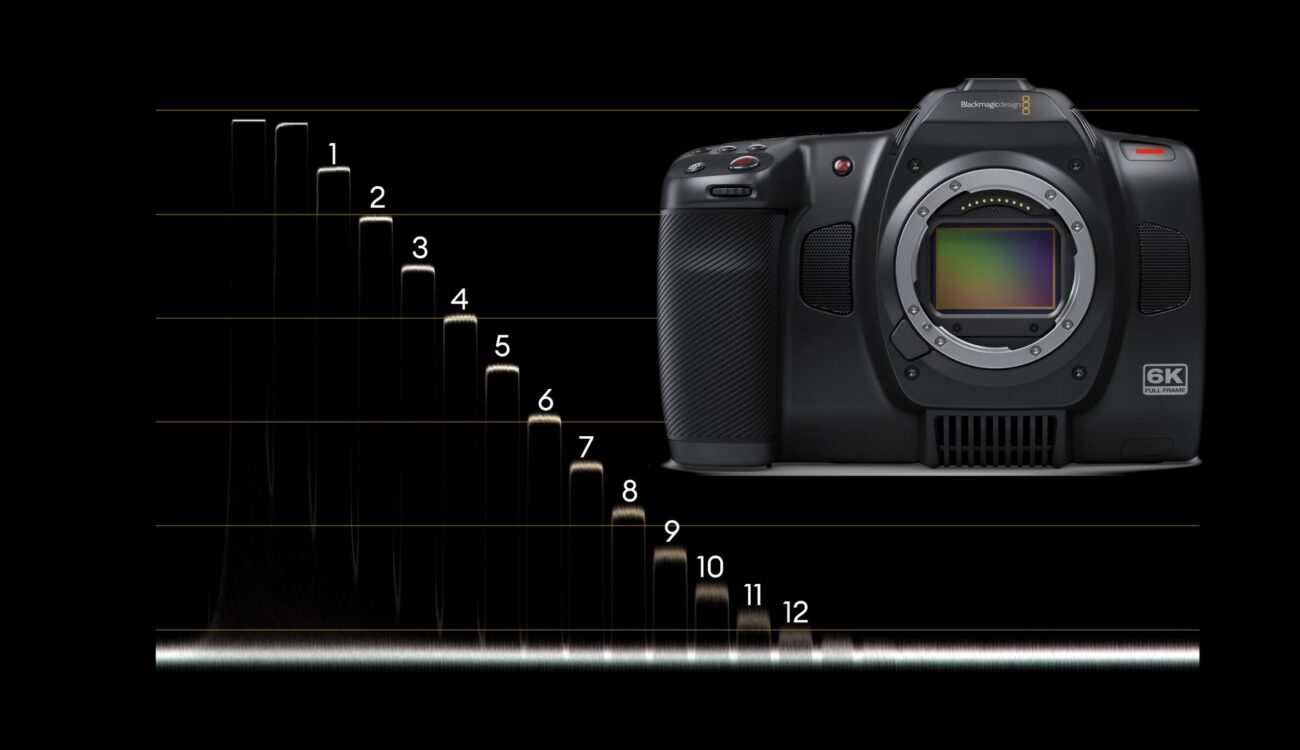
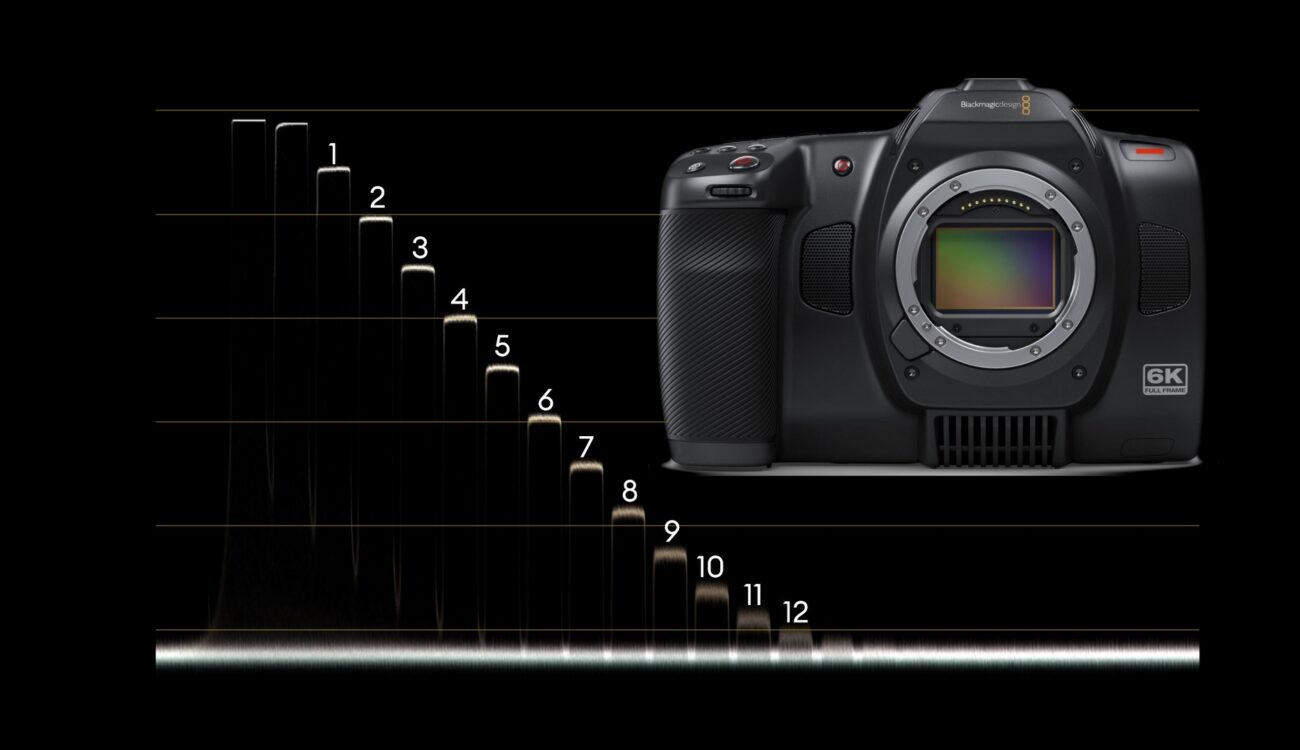
Recently, the new Blackmagic Cinema Camera 6K arrived at the CineD headquarters. Reason enough to run it through our standard lab test procedures. Curious to hear how this new, full-frame camera from Blackmagic Design fares? Then read on …
I have been a Blackmagic Design fan since the introduction of the original pocket cinema camera in 2013, and I still use it from time to time if I am after a certain look. For instance, using it with C-mount lenses can give me a nice vintage, very organic super 16 look. But this is another story.
I then added the Blackmagic Pocket Cinema Camera 6K to my arsenal, which is one of my two go-to cameras. The other one is the Panasonic LUMIX S1.
This brings me directly to the new Blackmagic Cinema Camera 6K (BMCC6K), which now uses the same L-mount as my Panasonic LUMIX S1 and also comes with a full-frame sensor. Please have a look at the article looking into the specs by my colleague Jakub here, and a first look by my colleague Francesco here. So, I was really interested to see what this first full-frame camera from Blackmagic Design brings to the table.
BMCC6K – Rolling shutter
Using our 300Hz strobe light, which generates the sequence of black and white bars, we get 18.7ms (less is better) for 6K DCI (17:9):
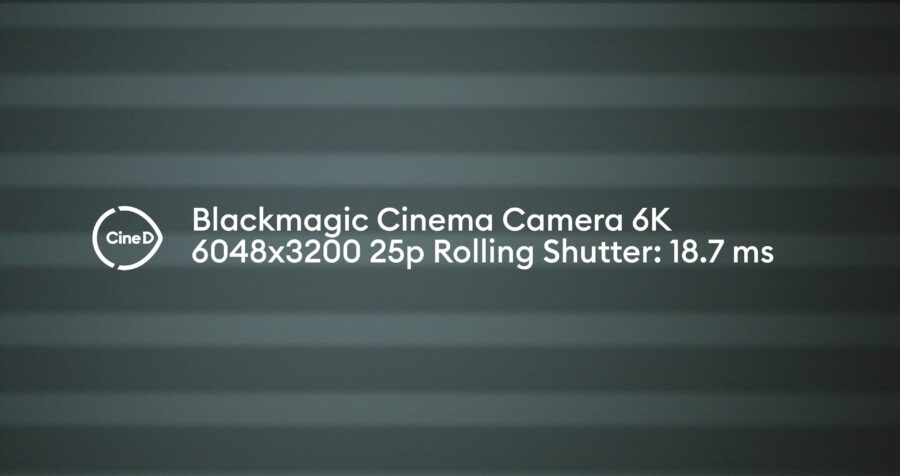
This is not the best result for 2023. We have a lot of other full-frame consumer cameras that are better. The Nikon Z 9 (8K – 14.5ms), the Canon EOS R5 C (8K 15.5ms), and the Sony A1 (8K 16.6ms) just to name a few. And, of course, the leader of the pack, the Sony a7S III with 8.7ms in 16:9 4K. Full frame cameras that perform worse in the rolling shutter department are the Panasonic LUMIX S series cameras which are all around 22ms.
In 3:2 open gate mode, we get 25ms, and in 4K DCI crop mode, we get 15ms for the new BMCC6K.
BMCC6K – Dynamic Range
The BMCC6K has again a dual native ISO sensor, with ISO400 and 3200 as the “native” ISO. In Blackmagic RAW though (which is the only codec now available, as ProRes HQ is gone), ISO can be set in post. These two ISOs, however, represent a good balance between highlights and shadows.
Let’s have a look at the waveform of the 6K open gate, BRAW 3:1 at ISO400 (color science gen5):
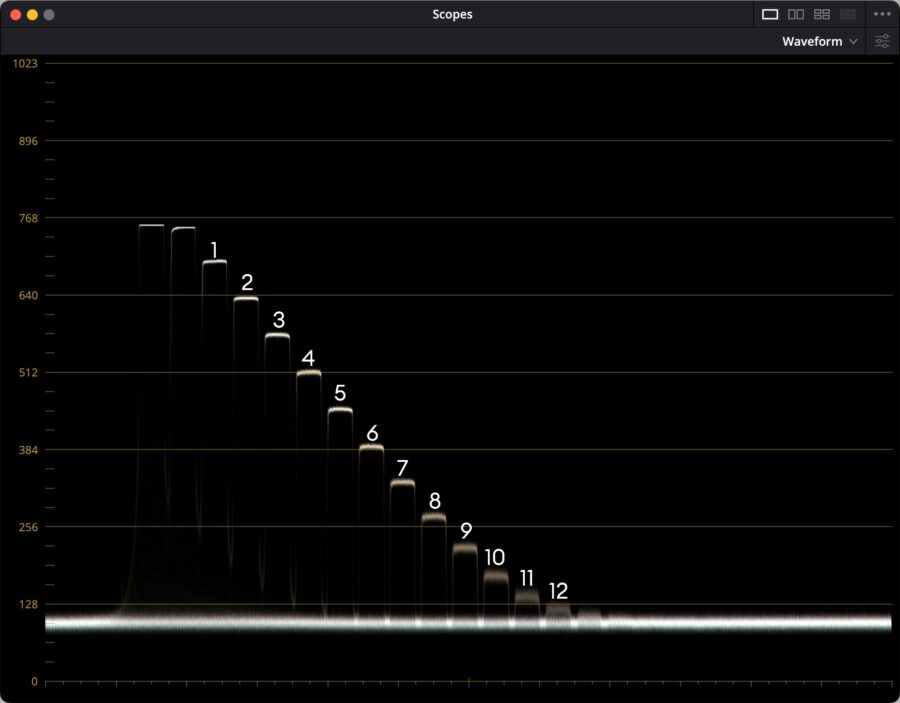
A solid 12 stops above the noise floor can be identified, with a 13th and even a 14th stop visible.
IMATEST calculates 11.6 stops at a signal-to-noise ratio (SNR) of 2, and 12.9 stops at SNR = 1 for ISO400. These are almost exactly the same results that we measured for the BMPCC6K and BMPCC6K Pro (they actually showed 0.2 stops better results at SNR = 2). Also, the noise levels look very similar (see our lab test article here).
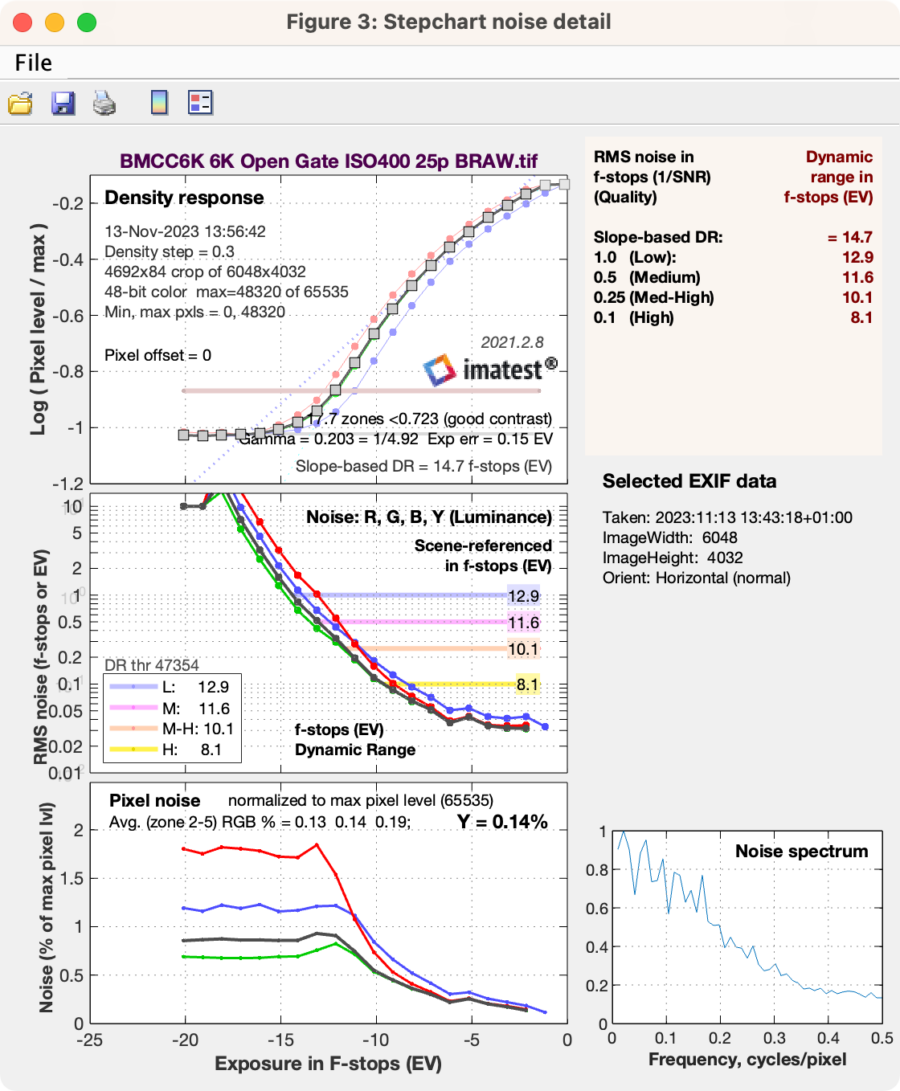
Now, let’s have a look at the second native ISO circuit – ISO3200:
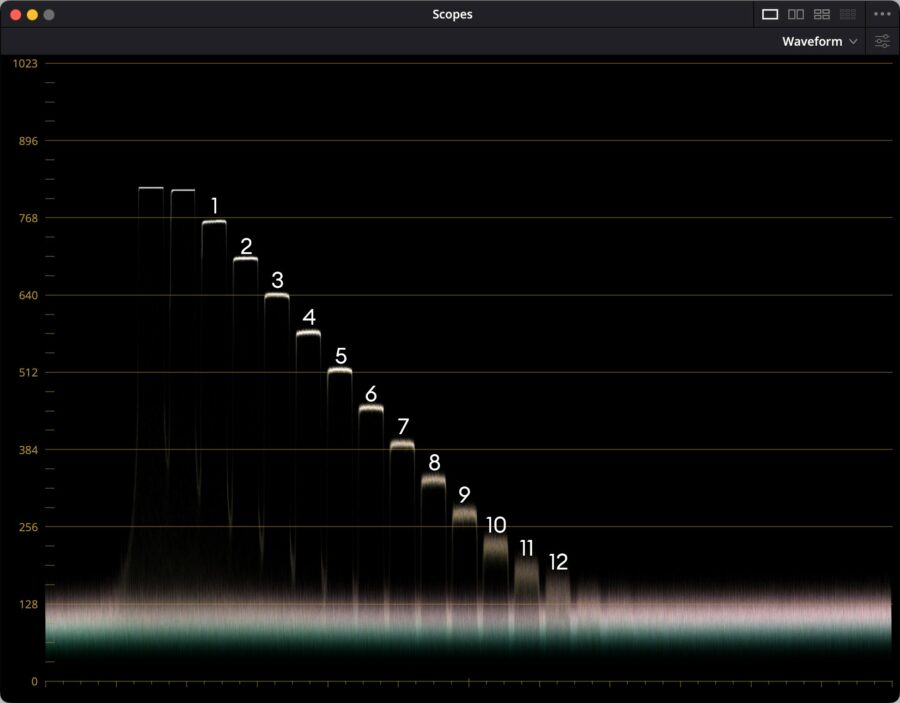
Also for ISO3200, about 12 stops are visible above the noise floor. However, the second native ISO is really very noisy. Let’s see what IMATEST calculates:
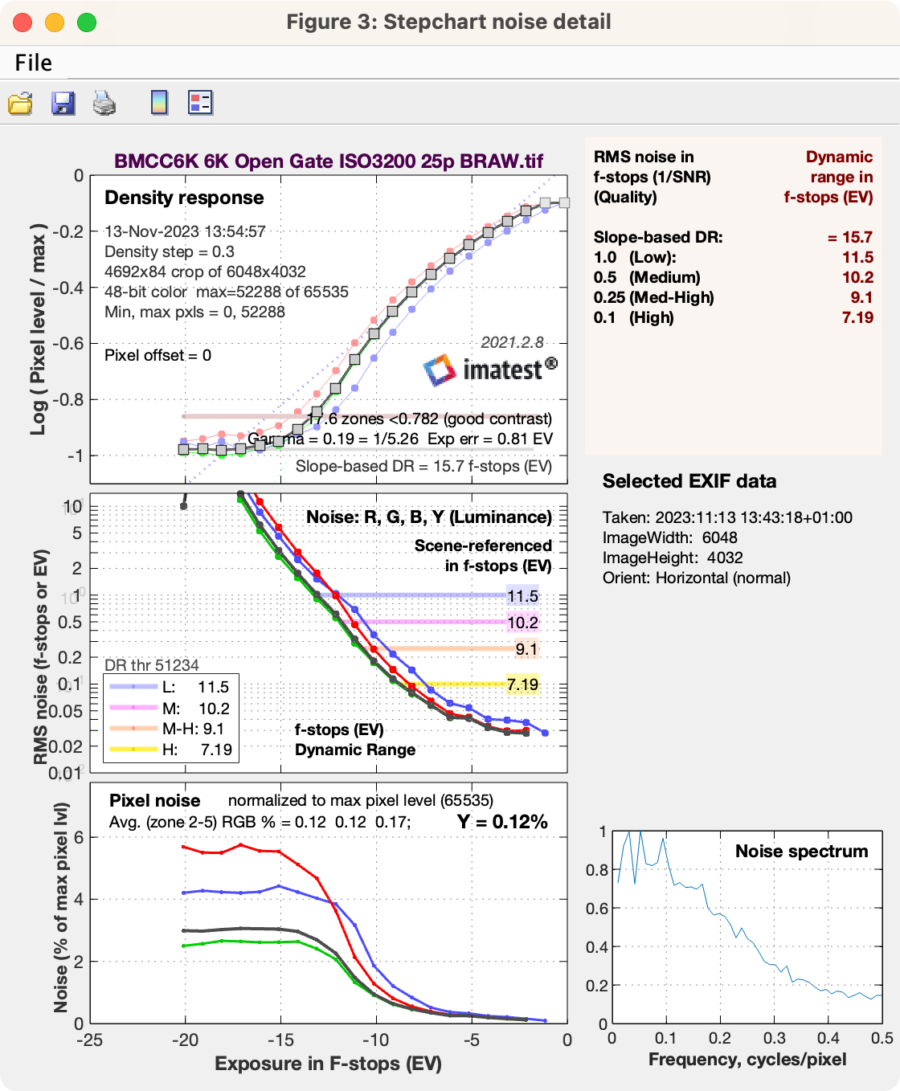
IMATEST calculates 10.2 stops at SNR = 2 and 11.5 stops at SNR = 1. This is similar to what we measured for the BMPCC6K and 6K Pro (lab test here).
Hence, you lose about 1.5 stops when switching to the higher ISO circuit, which is not exactly what I would expect from a dual native ISO sensor. All the other cameras that we tested so far typically showed less than half a stop difference in dynamic range when switching to the second native ISO value.
In addition, the normalized pixel noise reaches values of around 6 in the red channel (see the lowest of the 3 diagrams above), which is way higher than for the BMPCC6K and 6K Pro at ISO3200. I did some quick tests comparing the two cameras at home and actually found the noise nastier, and much more difficult to remove with the new full-frame BMCC6K. Quite surprising to be honest …
In the crop 4K modes, the same exact dynamic range results for the two ISO’s are obtained, which is to be expected – also for the higher frame rates that are possible in those modes.
BMCC6K – Latitude
Latitude is the capability of a camera to retain details and colors when over- or underexposed and pushed back to base exposure. Some time ago, we chose an arbitrary value of around 60% luma value (in the waveform) for our subjects’ forehead as the base exposure in our standard studio scene. This CineD base exposure should help our readers get a reference point for all the cameras tested, regardless of how they distribute the code values and which LOG mode is used.
Again, BRAW 3:1 open gate mode at ISO400 was used, but we only display 16:9 frames here.
As usual, we overexpose until the red channel is at the cusp of clipping on the forehead of our subject (my dear colleague Johnnie in this case), and then we push it back to base exposure in post. Here, typically some patches of the color checker on the left are clipped. Those can be brought back by using the “highlight recovery” option in the RAW camera tab of DaVinci Resolve 18.6.4 that we used here. However, we only test with “highlight recovery” turned “OFF”, as color accuracy suffers massively with reconstructed color channels (as we wrote in many earlier articles) – but it is a nice option to have to save parts of the image if they are partially clipped.
For Blackmagic color science generation 5 (due to the code value distribution at ISO400) that gives 3 stops of overexposure possibility:
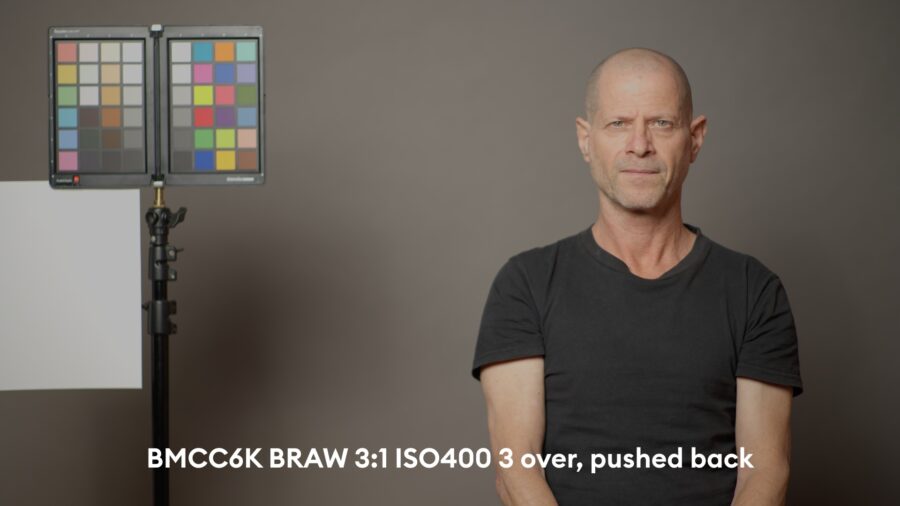
From here forward, we close the iris of our ZEISS Compact Prime 85mm T1.5 (which we always use for full-frame cameras) to T2, T2.8, and so on until T8, and then we also double the shutter speed. These images are also normalized back to base exposure in post.
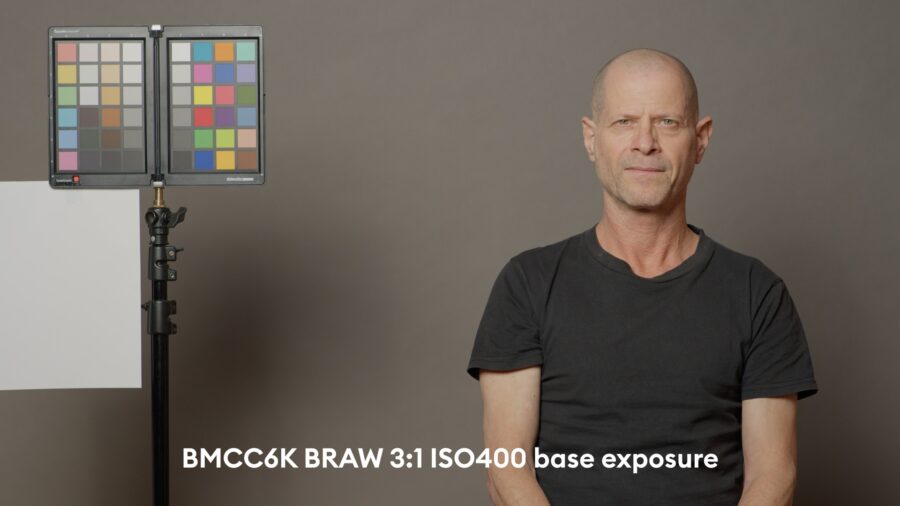
Now, let’s directly move to 5 stops of underexposure (from base), brought back. Here, quite suddenly, noise starts to kick in, which was almost absent even for the 4 stops under image that was brought back:
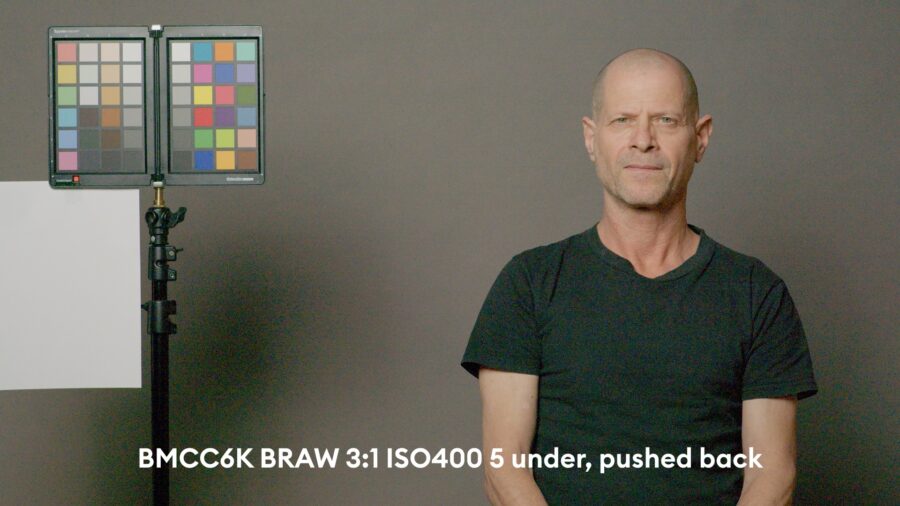
We are at 8 stops of exposure latitude (3 over to 5 under). That is almost the standard now for consumer full-frame cameras like the Sony A1, the Panasonic LUMIX SH1, S1, and S5 (not the S5II as this one only had 7 stops of latitude). Noise reduction helps to clean up the image, but a green tint stays in the shadows:
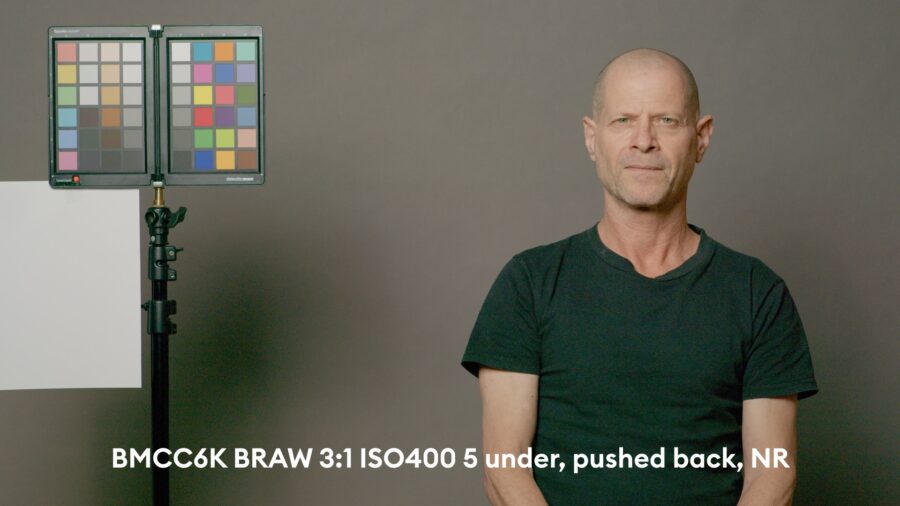
It is already at the cusp of being usable, but I will still count it as a valid result. Quite massive temporal and spatial noise reduction is needed:

Now, let’s move to 6 stops underexposure:
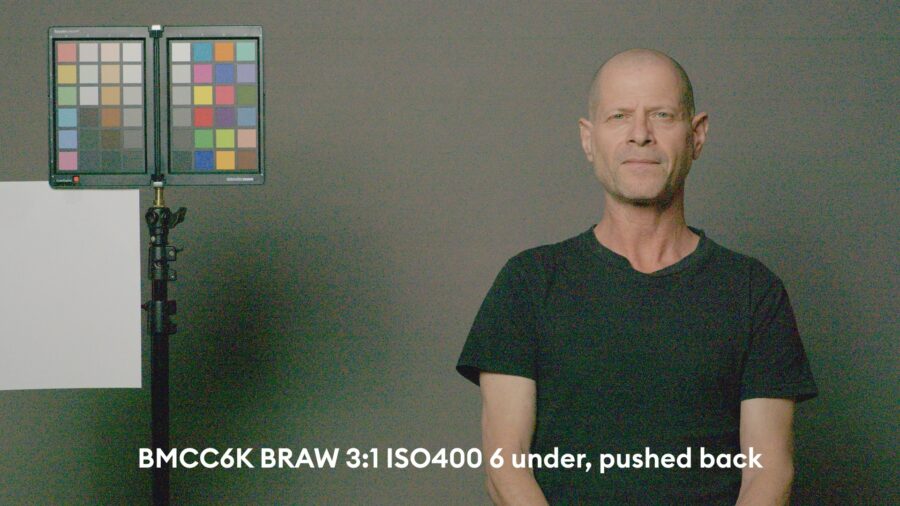
Now, the noise becomes massive, and horizontal stripes also start to appear. Plus, the nasty green tint in the shadows is much more pronounced. The horizontal stripes can be identified more easily when using noise reduction:
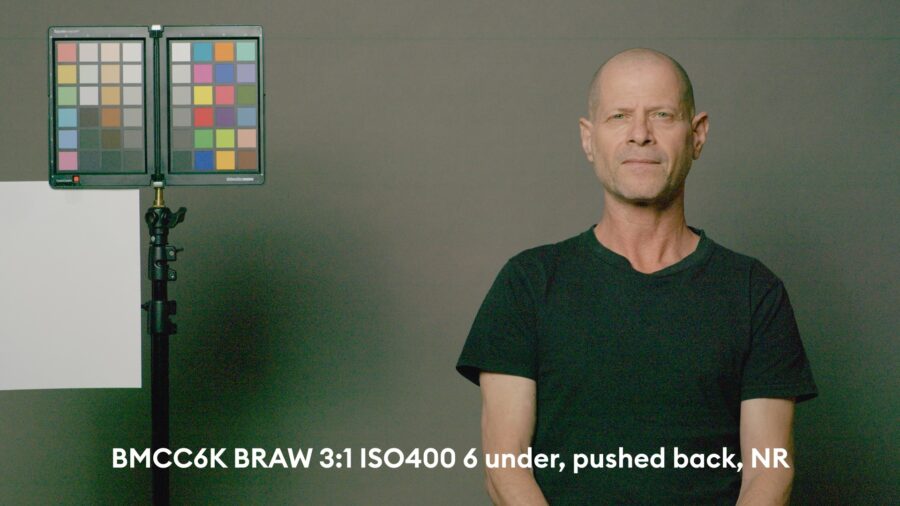
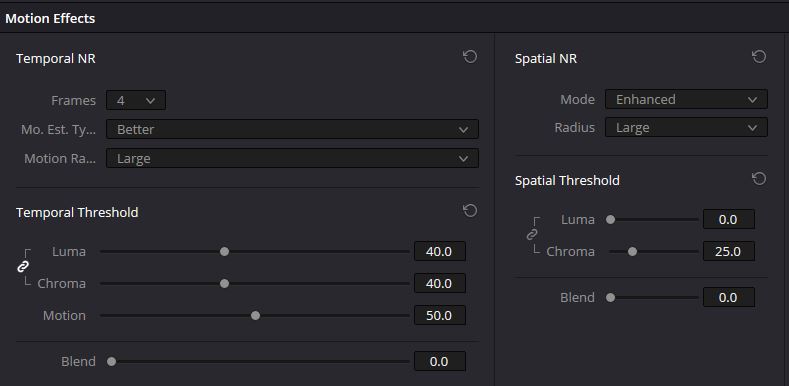
Hence, this is a clear “game over”, which leads us to the conclusion that 8 stops of exposure latitude are possible with the new BMCC6K. Compared to recent consumer cameras, this is 1 stop better than the Canon EOS R5 C or Panasonic LUMIX S5II, and it is similar to the Sony A1, Panasonic LUMIX S1H, S1 or S5, and also Nikon Z 9 as well as Canon EOS R3.
This result is a tad disappointing, as I did expect the 12-bit BRAW codec to have more potential to pull up shadow stops compared to the H.264 or H.265 codecs that are typically available for consumer cameras.
The leaders of the pack in the full frame segment are the RED V-Raptor with 9 stops and the ARRI Alexa Mini LF with 10 stops of exposure latitude. Our benchmark is the Super35 ARRI Alexa 35 with 12 stops.
Summary
The new Blackmagic Cinema Camera 6K shows a solid performance in the lab test. In the rolling shutter department, it falls behind compared to most recent consumer full-frame cameras, whereas in the dynamic range department, it is on a similar level, at least for the lower native ISO. The higher native ISO is sort of a problem child; I would stay away from it if possible.
Latitude is also in the middle ground, nothing special, but better than some recent cameras like the Panasonic LUMIX S5II or the Canon EOS R5 C.
As a BMPCC6K or 6K Pro user, it is simple – lab test results for the new full-frame BMCC6K are sort of “copy & paste” from the APS-C sized BMPCC6K and 6K Pro. Hence, a bigger sensor, but everything else is similar.
Have you shot with the BMCC6K yet? What is your experience? Let us know in the comments below.






